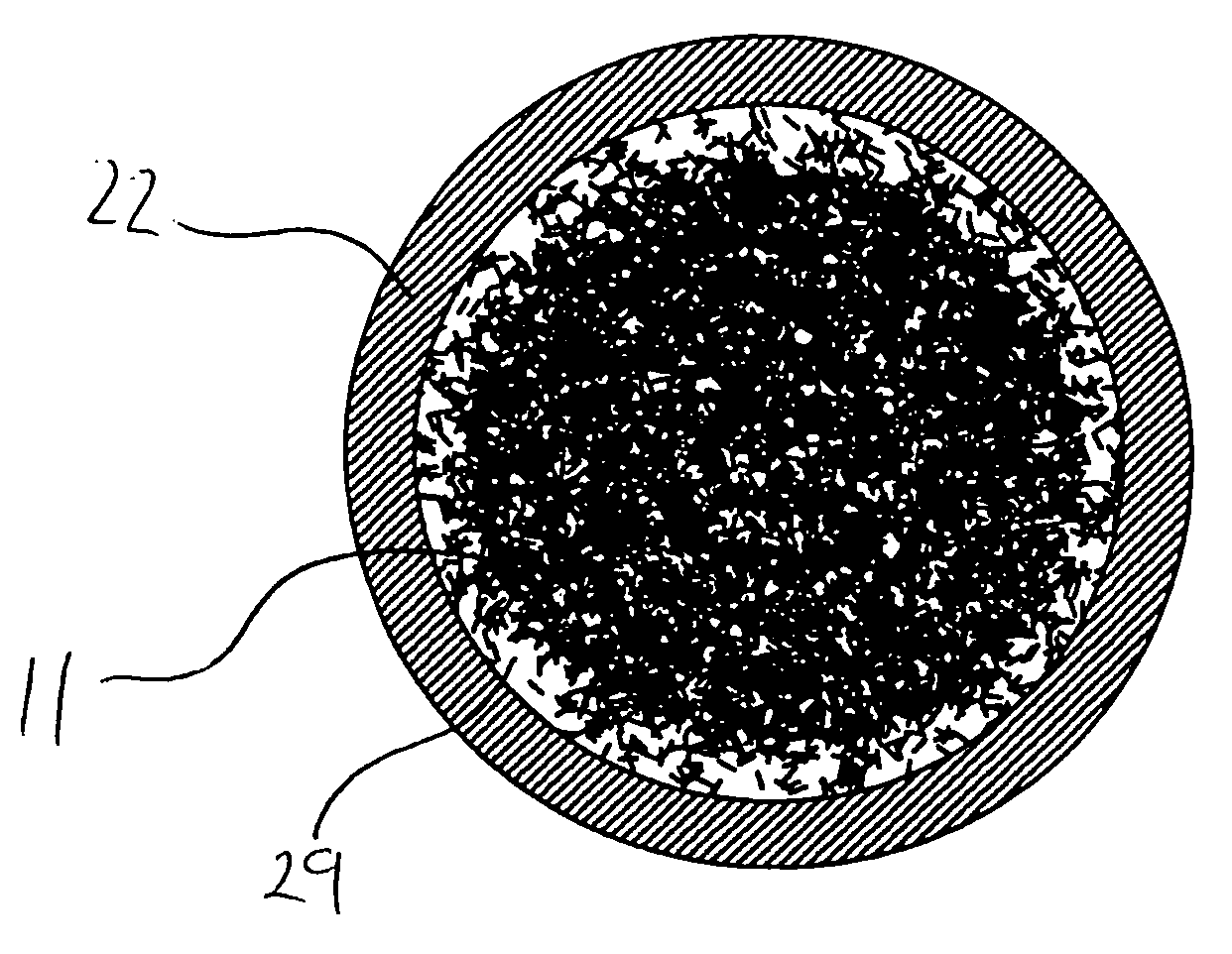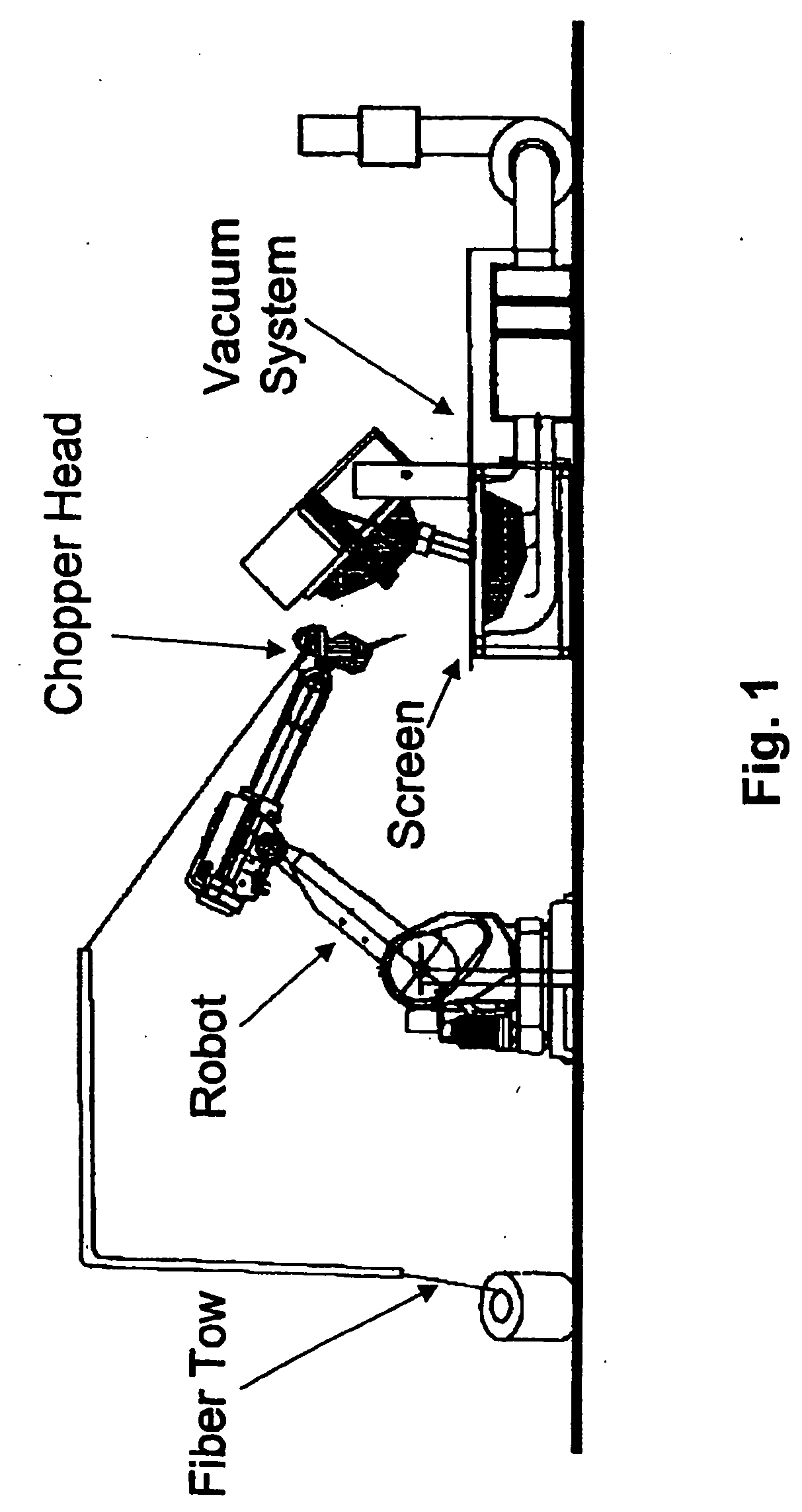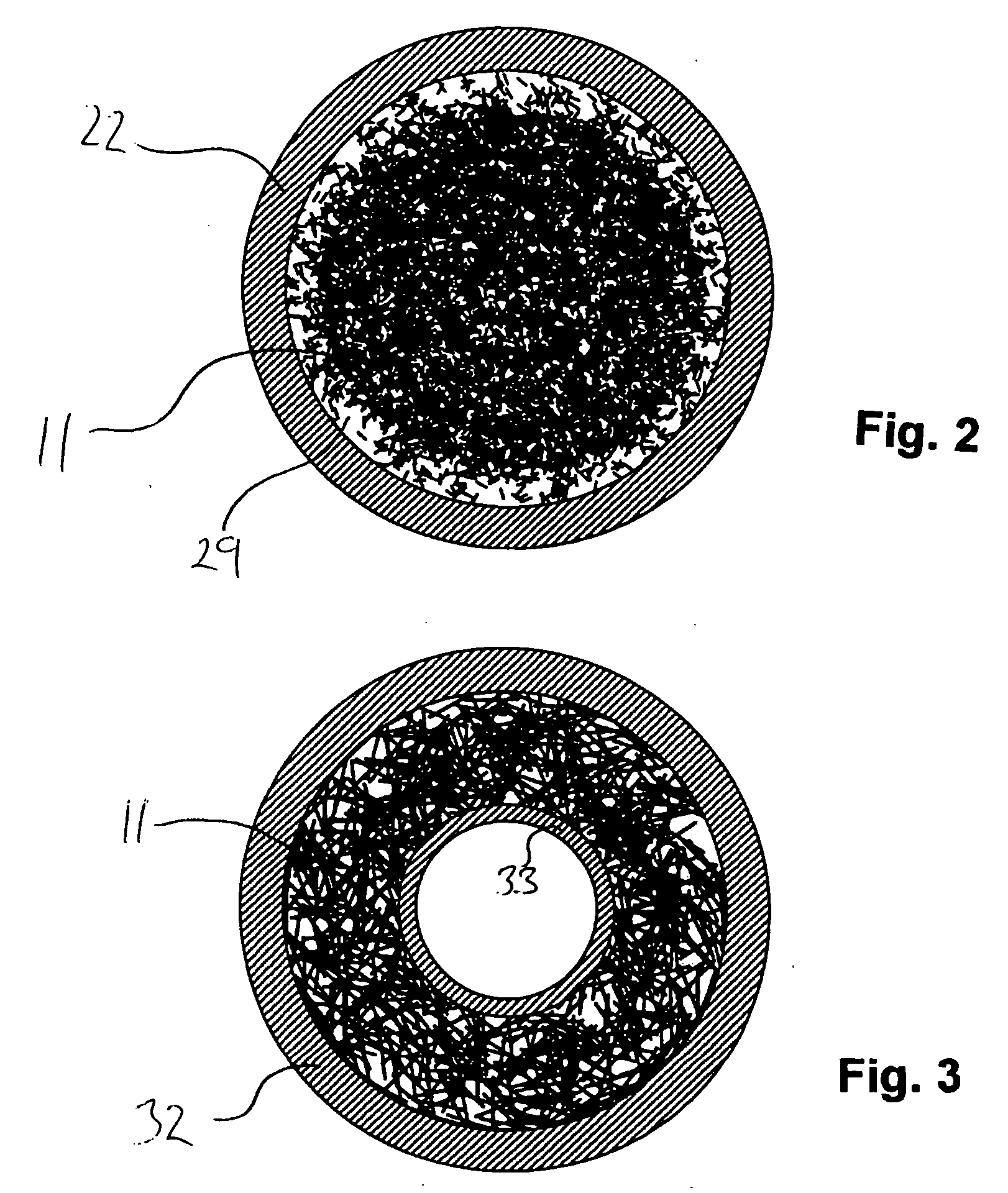Manufacture of thick preform composites via multiple pre-shaped fabric mat layers
- Summary
- Abstract
- Description
- Claims
- Application Information
AI Technical Summary
Benefits of technology
Problems solved by technology
Method used
Image
Examples
Embodiment Construction
[0024] This invention provides a process for the manufacture of preforms for thick structural composite parts. In accordance with this invention, individual layers of fiber mats with defined microstructure are produced by means of a fiber spray system. The individual fiber mats are subsequently stacked to make a multi-layer composite preform. The individual fiber mats are interlinked, for example by needling of the three-dimensional preform or by the use of tabs and lugs built into the individual fiber mats or by virtue of three-dimensionality in the individual fiber mats themselves. The fiber preform is densified by resin infiltration. The novel manufacturing apparatus, comprising one or more fiber spray-up and layer assembly stations, also constitutes an aspect of this invention.
[0025] The present inventive system for the fabrication of preforms for thick, three-dimensional composite parts includes various components. One component of this invention is a robotic process for chopp...
PUM
| Property | Measurement | Unit |
|---|---|---|
| Thickness | aaaaa | aaaaa |
| Thickness | aaaaa | aaaaa |
| Thickness | aaaaa | aaaaa |
Abstract
Description
Claims
Application Information
 Login to View More
Login to View More - R&D Engineer
- R&D Manager
- IP Professional
- Industry Leading Data Capabilities
- Powerful AI technology
- Patent DNA Extraction
Browse by: Latest US Patents, China's latest patents, Technical Efficacy Thesaurus, Application Domain, Technology Topic, Popular Technical Reports.
© 2024 PatSnap. All rights reserved.Legal|Privacy policy|Modern Slavery Act Transparency Statement|Sitemap|About US| Contact US: help@patsnap.com










